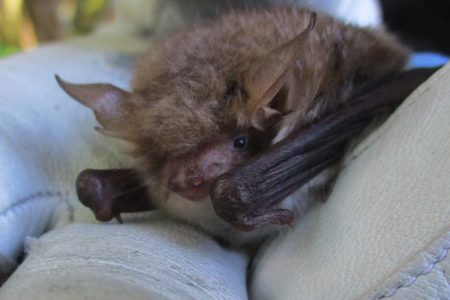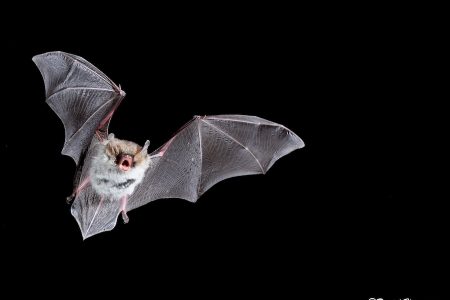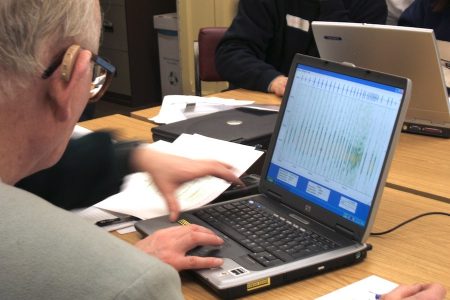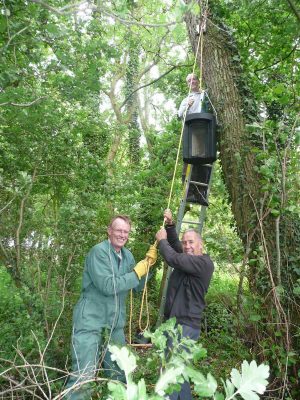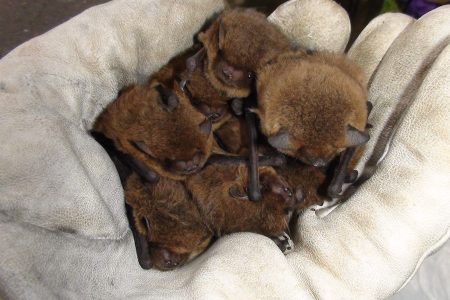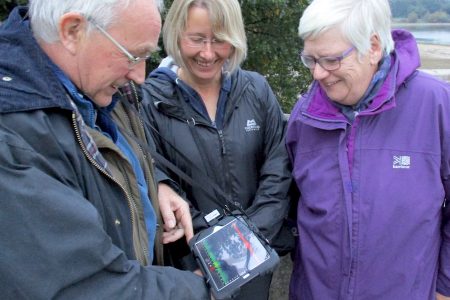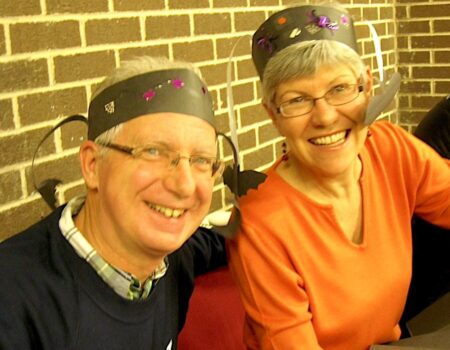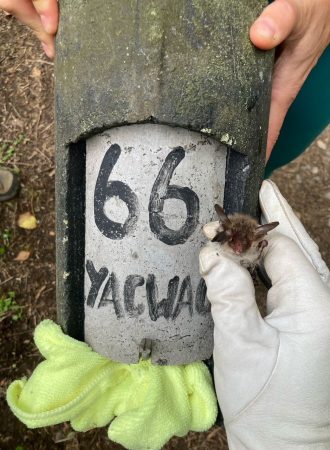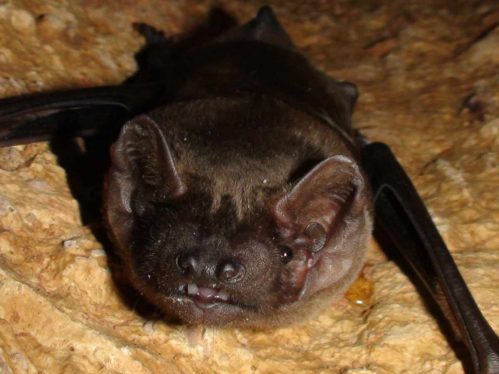
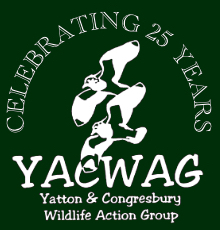
Wildlife
Bats
______
North Somerset is a local bat ‘hotspot’ but is also internationally important for one species - the Greater Horseshoe Bat. Eighteen species of bat can be found in the UK of which 15 have been recorded in the parishes of Yatton and Congresbury. Other species may be added as a result of YACWAG’s survey work. The local landscape supports two Greater Horseshoe maternity colonies whose roosts form part of the North Somerset and Mendip Bats Special Area of Conservation (SAC).
About Bats
Bats are mammals with super-skills like echo-location, enabling them to zoom around at high speed in the dark. Their mysterious abilities have led to their reputation as scary creatures and there are many myths around bats which are completely untrue. There are no vampire bats in the UK – all of our native species feed on insects, so the more bats flying over your garden the less trouble you will have with midges. One bat can eat as many as 2000 in a night!
Little was known about bats until modern technology came along. New equipment that converts the high-frequency sounds of bat calls into sounds that human ears can hear, gives certainty to which species are calling or feeding.
Bat helpline
Bats are fully protected in UK law. They are harmless and need our protection.
If you find a bat, which may be sick or injured, please visit the Bat Conservation Trust website or ring their helpline 0345 1300 228.
In the UK bat droppings and urine contain no viruses, bacteria or fungi. If you have bats in your house, church or other building and would like to know more, you will find advice on the Bat Conservation Trust website, or please get in touch through our Contact Us page.
Our local bats
1. Greater Horseshoe
2. Lesser Horseshoe
3. Serotine
4. Noctule
5. Daubentons
6. Natterers
7. Whiskered
8. Brandts
9. Common pipistrelle
10. Soprano pipistrelle
11. Nathusius pipistrelle
12. Brown long-eared
13. Barbastelle (found 2024)
14. Bechstein's (found 2025)
15. Leisler (historic record – no recent local record confirmed)
All but the last three on the list have been found in Littlewood.
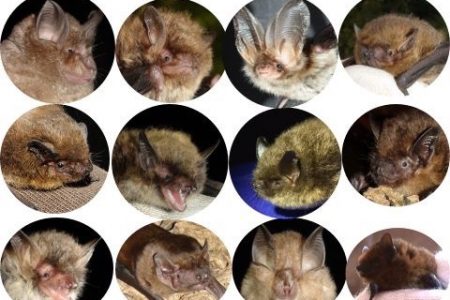
YACWAG’s Bat Group
YACWAG has a dedicated group of bat enthusiasts, some of whom are licensed to check bat boxes.
Barbastelle and Bechstein's bats, both woodland specialists, have been found recently in Congresbury. The Grey Long-eared bat has also been found in North Somerset but not locally at present. A ‘new’ species, the Alcathoe bat, was confirmed in the UK in 2009 and its presence in North Somerset may be a matter of time.
YACWAG reserves are managed to support an abundance of insects and create the sheltered spaces needed by bats. Bat boxes have been put up for monitoring bats, and water-courses on our land have been created or cleared and restored. Taller, denser hedges give shelter from wind and predators and produce more insect food. At Cobthorn Reserve a habitat called wood pasture is being created with livestock grazing under a scatter of big trees. Three small orchards have been planted at Kenn Moor and Cobthorn. These are habitats that bats thrive in.
YACWAG monitors local planning applications. Many bat roosts and habitats have been lost to housing development within our area but we now comment on most damaging planning applications and raise awareness of the needs of bats. We also notify roosts and habitats and have put up hibernation boxes.
Our significant Bat monitoring milestones
2003
Littlewood, a small (2 ha) woodland was purchased. It was considered important for bat foraging and commuting across Kenn Moor SSSI. The £20,000 project was funded through three grants.
2004
Bat and invertebrate monitoring project for Littlewood. £2500 was raised from a grant for bat detectors and moth trapping equipment. Local training courses for bat and moth identification were run in conjunction with Goblin Combe Environment Centre. As well as training in the use of detectors and Batscan computer analysis.
2005
National Bat Monitoring Programme (NBMP) Waterway survey started, Congresbury Yeo.
2006
NBMP Field survey started, Claverham. Avon Bat Group Batscapes Project established Parish Bat Warden scheme. Littlewood bat box monitoring project established in conjunction with Avon Wildlife Trust (AWT) North Somerset Levels and Moors officer (35 bat boxes placed in YACWAG’s reserves).
2009
One Nathuius pipistrelle bat discovered at Blagdon Lake as part of NBMP survey.
2010
Batmap project established with £4000 grant for Anabat recorders. Static recorders placed on YACWAG reserves including Littlewood.
2011
Batmap project extended through £5,700 Big Lottery Fund Community Wildlife Grant, providing radio tracking equipment and tags. Serotine and Nathusius bats tracked with ground-breaking results.
2012
Remarkable total of 12 bat species recorded using Littlewood for foraging and roosting including Greater Horseshoe Bat. YACWAG’s key volunteer, Daniel Hargreaves, awarded Bat Conservation Trust’ Pete Guest Award.
2013
Nathusius pipistrelle bat tagged at Blagdon Lake in 2012 found in Netherlands in December 2013. This made national press and TV news.
2014
YACWAG hosted a National Nathusius Conference at Ubley.
2015
A Natterers roost in a bat box was discovered in Littlewood. Two YACWAG volunteers completed training and obtained Class 2 licences from Natural England for checking bat roosts.
2016
Grant received from Bristol Airport for purchase of user-friendly bat detectors for surveying activity of Greater Horseshoe bats in and around Cleeve and Wrington.
2017
The Co-op food store in Yatton helped raise funds to buy more ‘entry-level’ bat detectors so that school groups, Brownies, Cubs and other children can have access to a bat detector on walks, giving them a close-to-nature experience.
Bats’R’Us – a positive bat-themed Halloween event was held at Cleeve Village Hall.
2018
North Somerset Council’s Supplementary Planning Document (SPD) for the North Somerset and Mendip Bats Special Area of Conservation (SAC) was formally approved.
2019
Atkins Ecology of Bristol donated two static bat detectors to assist YACWAG’s survey work.
2020
Socially distanced buddy ‘bubble’ system enabled the National Bat Monitoring Programme (NBMP) walks to continue during Covid restrictions.
2021
NBMP surveys were opened up to volunteers as Covid restrictions were eased.
2022
Land in Congresbury (Cobthorn Reserve) was transferred to YACWAG ownership by North Somerset Council and Strongvox to create habitat for Greater Horseshoe Bats.
2023
Cobthorn Reserve was extended by the purchase of the adjacent field called Paddocks. 70 trees have been planted to create wood pasture as it is an ideal bat habitat.
2024
Bechstein’s bat was found in a YACWAG bat box on the Strawberry Line at Congresbury and tagged under a Vincent Wildlife Trust licence.
© Copyright YACWAG, or original authors. All rights reserved. | Registered charity 1076362 | Privacy policy | Cookie policy | Terms & Conditions |Web design: StanfordGraphics
